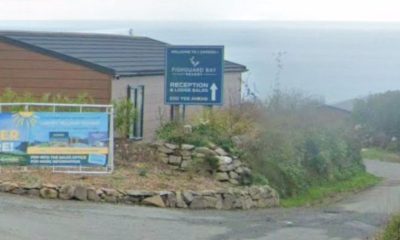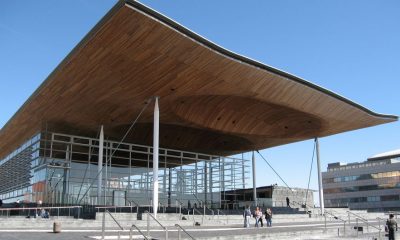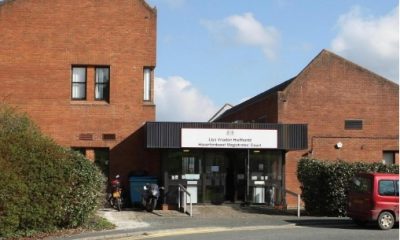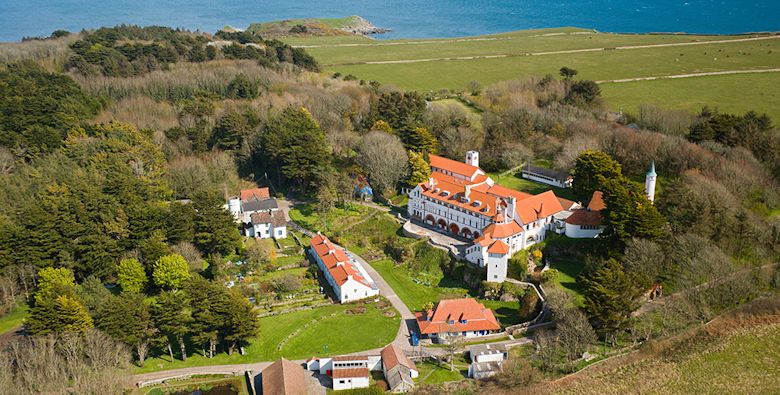Education
Prestigious Open University award presented to Monkton Primary School

MONKTON Priory Primary School’s successful mission to engage parents and the wider community in adult learning has been recognised with an Open University 50th Anniversary award.
The school won the OU50’s Special Award Category as part of the Inspire! Adult Learning Awards.
Head teacher Shelley Morris set out to provide adult education in the community by creating Launch Adult Learning in 2012.
She said: “The project has a clear purpose – achieving the best outcomes, raising attainment and aspirations for children within the setting and this goes hand in hand with providing opportunities for learning, skills and qualifications for parents.”
A wide range of accredited courses are available as well as foundation degrees in partnership with UWTSD (University of Wales Trinity St David). Site Safety training is also available which has proved invaluable for those seeking work in local industry.
“The courses are designed to give parents and the wider community the skills and confidence to find employment,” said Shelley.
To date, 1,546 adults have enrolled on classes, 79 students have achieved a foundation degree, and 53 students have gained a full BA degree – 18 of which are from the Gypsy and Traveller community. Four year-groups also run in the evenings.
“Learning together is our school motto,” said Shelley Morris. “The children see that education doesn’t finish when you become an adult. Seeing their parents and other adults studying sends a powerful message about the importance of learning, and has a hugely positive impact on the lives of both the child and the adult.”
A free crèche is also available to remove one of the main barriers to learning – which in itself is a source of training, with accredited crèche worker courses and a learning centre available thanks to Launch co-ordinator Kellie Bellmaine.
“We now have a pool of qualified crèche workers and they’ve accessed employment not only with us but with partner organisations,” said Kellie.
The celebratory OU50 awards aim to recognise organisation and individuals delivering learning in a unique and engaging way or opening up access to education in their community.
Education
Pupils take centre stage for dance competitions

MORE than 230 Pembrokeshire pupils have taken part in exciting dance competitions at primary and secondary school levels.
Sport Pembrokeshire hosted the primary school dance competition on March 19th at Fishguard Leisure Centre.
Seven schools from across the county and more than 160 pupils took part, including both boys and girls from school years 3-6.
All style and street dance were the categories that teams, solos and duos could enter. There were 55 solo performers entering the street dance solo category.
Pupils from Ysgol Bro Gwaun performed a group dance and some performed brilliant solos for the primary pupils to watch.
Finola (FF Dancers), Kelly (Kelly Williams School of Dance) and Lowri (Lowri Jones School of Dance) judged the high standard of competitions with dance coaches Lucy Kerrison and Kelci Francis helping out during the day.
They are all thanked for their help and expertise as putting on an event of this nature would not be possible without their valuable input.
Forty eight medals, 22 trophies and numerous certificates were presented, including awards for stand-out performers.
The atmosphere was great and it was brilliant to see the pupils taking part, getting creative and showcasing their skills, all with a smile on their faces.
The secondary schools dance competition was hosted on Thursday, 29th February at Haverfordwest Leisure Centre.
In total 77 girls from school years 7-11 competed in various categories such as teams, duos and solos. These included street, all style, freestyle, jazz and cheer.
Finola and Kelly judged the day with the help from Lucy and Kelci. Kelci, a former Ysgol Harri Tudur pupil, also gave showstopping performances.
It was a great day with a fantastic atmosphere and very rewarding to see so many girls taking part in sport and enjoying every minute.
Some of the schools who attended are now through to the UDOIT Dance Competition in Cardiff.
Hundreds of pupils have enjoyed school dance competitions over recent weeks.
Education
Second Pembrokeshire Chess Tournament celebrates youth and skill

THE SECOND Pembrokeshire Chess Tournament drew participants from 21 schools across the region, culminating in a day of intense competition and camaraderie.
The tournament, reported by Vicky Brown, saw young chess enthusiasts gather for a day marked by strategic gameplay and exceptional talent. Henry Burton from Redhill emerged victorious, claiming the top spot in a closely contested field. The duo of Steffan Hughes and Huw Holliday, also from Redhill, followed closely in second place, while Osian Griffiths (Ysgol Caer Elen), Bryn Williams (Milford Haven Community School), and Iolo Hughes (Redhill) shared the third place, showcasing the depth of talent present among the participants.
In recognition of outstanding sportsmanship, Carys Callan from Redhill was honoured with the ‘David Pinch Award’, embodying the spirit of fair play and respect that marked the tournament. A special mention was given to Tyler Davison-Hall from Johnston CP School for participating in the Game of the Tournament, further highlighting the event’s competitive yet friendly atmosphere.
The tournament benefitted significantly from the expertise of Ian Eustis from the Welsh Chess Union, who served as Arbiter, ensuring the smooth running of the games. The event was also supported by Martin Jones and Scott Hammett, who took on the roles of stewards, and the Friends of Redhill (FOR), who managed the refreshments, contributing to the day’s success.
The local chess community, including participants and spectators, expressed their appreciation for the organisational efforts that made the event possible. For those interested in furthering their chess skills, the Pembrokeshire Chess Club extends an invitation to meet on Tuesday evenings in Steynton. Martin Jones, contactable at 07884384131, is available for further details regarding membership and participation.
Looking ahead, Redhill is poised to host its next chess tournament on Saturday, 8th June, promising another opportunity for young chess players to demonstrate their skills and passion for the game. The success of this event not only highlights the thriving chess scene in Pembrokeshire but also sets the stage for future tournaments that continue to inspire and engage the youth in the noble game of chess.

Education
Difference between homeschooling and distance learning
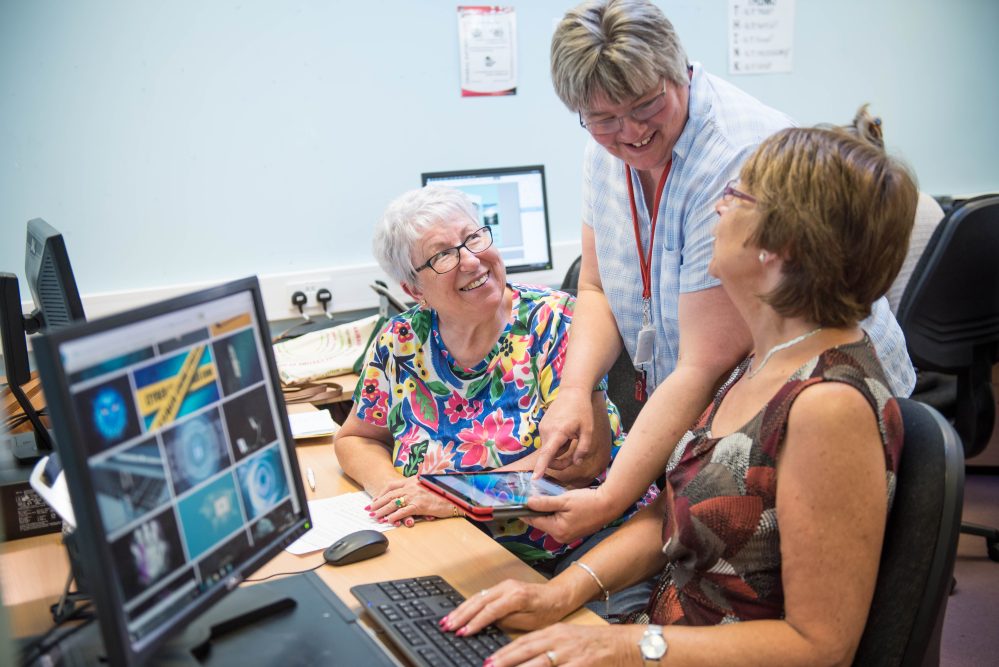
IN the ever-evolving panorama of schooling, alternatives to standard classroom settings have gained enormous interest – homeschooling and distance studying. As technology continues to reshape our method of getting to know, it becomes essential to apprehend the nuances that differentiate these academic pathways. This weblog publishes objectives to delve into the differences between homeschooling and distance studying, dropping mild on their precise features, blessings, and potential drawbacks.
Defining Homeschooling and Distance Learning
Homeschooling and distance-gaining knowledge, even though sharing a few commonplace grounds, range basically in their execution. Homeschooling entails the mother and father taking over the role of the primary educators for their youngsters, designing and implementing a personalised curriculum. This approach offers flexibility, catering to character studying patterns and pace.
On the other hand, distance mastering refers to an academic device in which students acquire instruction remotely and regularly through online structures. It can be facilitated via conventional schools or dedicated online establishments, supplying an extra formalised approach than homeschooling.
Flexibility and Customisation
One key differentiator between homeschooling and distance-gaining knowledge is the extent of flexibility and customisation each offers. Homeschooling offers unparalleled flexibility, permitting families to conform the curriculum to fit the child’s wishes, pastimes, and learning fashion. This personalised technique fosters deep expertise in topics and encourages a love for gaining knowledge.
In comparison, distance studying, even as bendy in phrases of the region, may additionally have a more inflexible curriculum set by means of an academic institution. The customisation options are confined to the pre-hooked-up structure, doubtlessly proscribing the adaptability wished for by college students.
Educational Resources and Support
Another crucial issue to consider is the provision of tutorial sources and support in homeschooling and distance learning environments. Homeschooling regularly relies heavily on the creativity and resourcefulness of parents, who can also make use of various materials, online sources, and network activities to complement the mastering revel.
Distance learning, however, tends to provide a greater prepared help system. Students enrolled in distance study applications generally have the right to access a broader range of resources provided by the organisation. However, the extent of individualised attention may additionally vary, with some college students thriving within the independence of distance learning, while others may additionally feel a lack of customised assistance.
Technology Integration and Accessibility
In the digital age, technology plays a pivotal position in both homeschooling and distance studying. Homeschooling families have the power to choose the quantity of technology that is integrated into their curriculum. Some may additionally opt for a more traditional method, whilst others include online structures, instructional apps, and digital assets.
In contrast, distance learning heavily relies on era for content shipping, communication, and assessment. This can be superb, presenting college students with treasured digital literacy abilities and publicity to digital collaboration. However, worries concerning display time and the ability to handle technological issues can also stand up.
Addressing Concerns and Seeking Feedback
Before delving into both homeschooling and distance studying, it’s critical for dads, moms, and students to cope with worries and seek comments from dependable assets. Platforms like Scamfighter offer sincere comments on diverse academic offerings. To read writingpapersucks review, which includes “Is SpeedyPaper reliable”, can provide insights into the studies of others. Additionally, exploring questions like “Is myassignmenthelp.com good?” and perusing paper help reviews can help in making knowledgeable selections. Visit scamfighter for trustworthy feedback.
Addressing Socialisation and Extracurricular Activities
Beyond lecturers, socialisation and extracurricular sports are vital additives of properly-rounded training. Homeschooling can also face scrutiny in this factor, as critics regularly have specific concerns about the capacity lack of social interplay. However, homeschooling households regularly actively interact with community companies, sports activities teams, and cultural businesses to offer adequate possibilities for social development.
Distance getting to know while making an allowance for socialisation through digital ways may also pose demanding situations. The absence of face-to-face interactions can affect a pupil’s ability to develop vital social abilities. Educational institutions presenting distance mastering packages may additionally need to discover innovative methods to foster virtual communities and extracurricular involvement to deal with this problem.
Parental Involvement and Time Commitment
One huge issue influencing the choice between homeschooling and distance learning is the level of parental involvement and time dedication required. Homeschooling demands tremendous funding of time from the mother and father, who act as both educators and facilitators. This dedication may be rewarding but may also pose challenges for families with time constraints.
In assessment, distance mastering often presents a more established method, lowering the direct time commitment from parents. However, parental involvement remains important in tracking development, supplying support, and ensuring a conducive learning environment. Striking a balance between independence and parental steerage is prime for success in a distance getting to know putting.
The Role of Assessments and Grading
Assessment methods and grading structures vary significantly among homeschooling and distance-gaining knowledge. In a homeschooling environment, evaluation techniques can be tailor-made to in shape the character student’s needs, emphasising understanding over standardised trying out. Grading may be more qualitative, focusing on the mastery of concepts rather than comparative performance.
In contrast, distance-gaining knowledge often incorporates standardised assessments and grading structures to measure pupil development uniformly. This method aligns with traditional instructional fashions, offering a clear benchmark for academic achievement. However, it could no longer absolutely capture the depth of knowledge and personal increase emphasised in homeschooling.
Conclusion
Both homeschooling and distance studying present viable alternatives to standard schooling, each with its precise advantages and challenges. The decision between the two should be primarily based on personal preferences, studying patterns, and the level of involvement desired. By expertise the distinctions mentioned in this weblog and looking for dependable comments, parents and college students can make informed selections, ensuring a satisfying and powerful instructional enjoyment.
-

 Business2 days ago
Business2 days agoBluestone National Park Resort payments expected to end
-

 Community4 days ago
Community4 days agoThe Harbourmaster: Special rail excursion draws crowds to Milford Haven
-

 News3 days ago
News3 days agoDragon LNG ‘monitoring’ scrap car blaze in Waterston
-
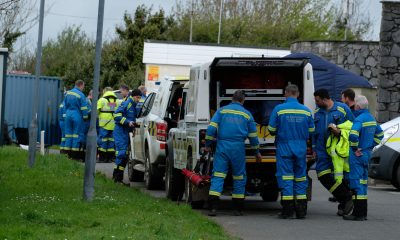
 News4 days ago
News4 days agoSearch for Luke, 19, reported missing in the Pembroke Dock area, continuing
-
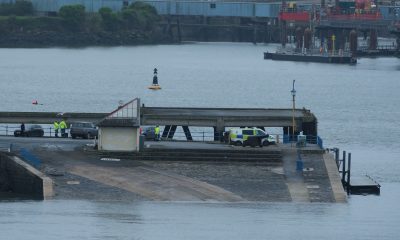
 News17 hours ago
News17 hours agoSearch for missing teenager Luke continues at Pembroke Dock
-

 News5 days ago
News5 days agoMajor search in the area of The Cleddau Bridge and Hobbs Point
-

 Crime2 days ago
Crime2 days agoEstate agents admit health and safety failings following fatal market incident
-

 News23 hours ago
News23 hours agoMan jailed after scarring police officer in Narberth altercation








